
22 Best Wrike Alternatives For Project Management In 2023
For a business to thrive, individuals need to be properly managing their workload, tasks and overall workflow. Having a clear vision of what every member of your team is up to at any given time is also important, as it ensures that you’re operating efficiently and minimizing time wasted. One of the easiest ways to ensure both of these things is by using the best project management software or productivity platform.
One of the more popular tools on the market is Wrike, a project management tool designed to organize and oversee project workflow. Wrike helps you plan, streamline and track progress as an individual and as a team. Wrike offers a free, unlimited-user plan that includes centralized task management without many other functionalities. After that, Wrike’s Professional plan pricing starts at $9.80 per user/month, and its most popular Business plan starts at $24.80 per user/month.
While it is a great tool, there are many other alternatives to Wrike that offer different functionalities and integrations that might be a better fit for your business. Choosing the right project management tool for your workflow is critical, but it doesn’t have to be complicated. We’re here to help. In this article, we’ll break down some of the top Wrike alternatives and provide information on how they compare.
1. Hive
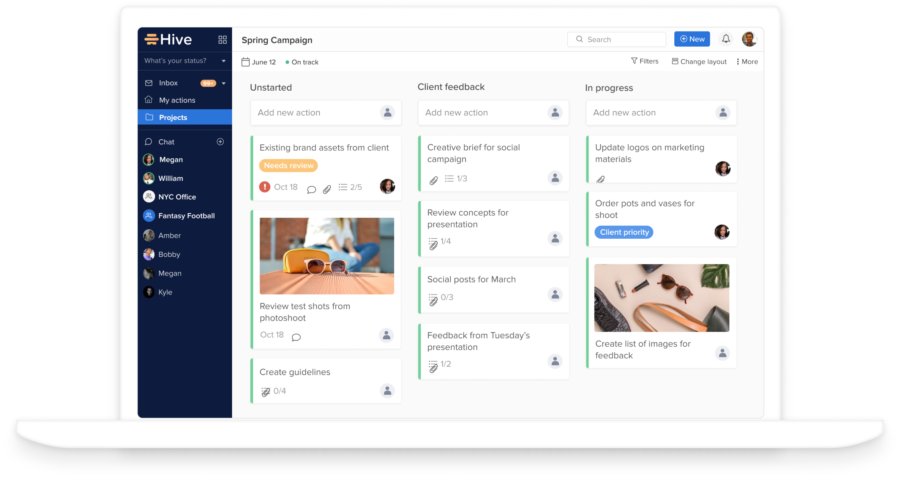
Hive is a project management tool that works off of “tasks” as a building block, the same way Wrike does. Hive’s interface is extremely user-friendly, and boasts a first-of-its-kind email integration which sends messages directly from Gmail and Outlook to Hive — that’s why it is on our list of the best Wrike alternatives. The tool also has several features that Wrike doesn’t have, including chat, custom charts and branding, and data import/export. See a full comparison of Hive and Wrike’s features here.
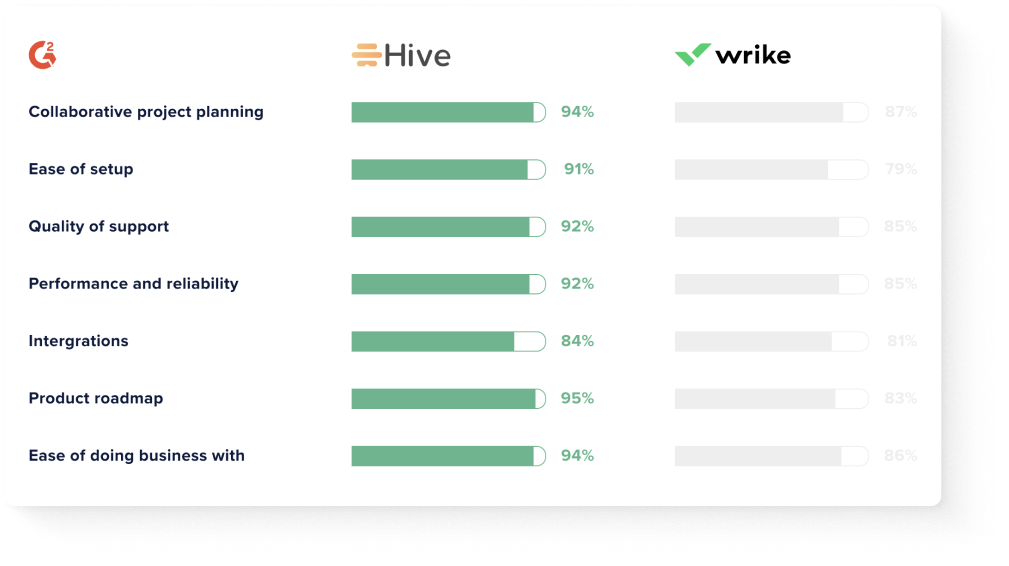
Price wise the two are similar — Hive is $12 per user/month — and although Wrike has a slightly lower tag price, a lot of their key functionalities are locked behind pricier subscription packages, so Hive actually offers more on average per dollar spent. It’s also worth keeping in mind there aren’t any limits to the amount of projects you can run through Hive, making it a great choice for larger companies that want to keep an eye on a large number of tasks. Hive is at the top of our Wrike alternatives list.
2. nTask

nTask is a lightweight project management software that is a great alternative to Wrike. nTask is free up to five people, and after that is only $2.99 per month per user. One of the pros of this tool is that it provides more in-depth tracking than Wrike, offering users the tools to schedule and plan meetings, record minutes, and detail risks and issues that arise during the planning process. Additionally, nTask has several management features that Wrike doesn’t have, including issue management, percent-complete tracking, and product road-mapping, which are handy for forward planning. nTask also has views that Wrike lacks, which puts it on our list of Wrike alternatives, including list view, calendar view and grid view.
nTask is definitely a great option if you’re looking for something less expensive, but there are several capabilities it lacks, including content import/export, a drag-and-drop feature, and customizable dashboard, which could be important to your organization. Weigh your own needs to decide if nTask makes the cut for your list of Wrike alternatives.
3. Airtable
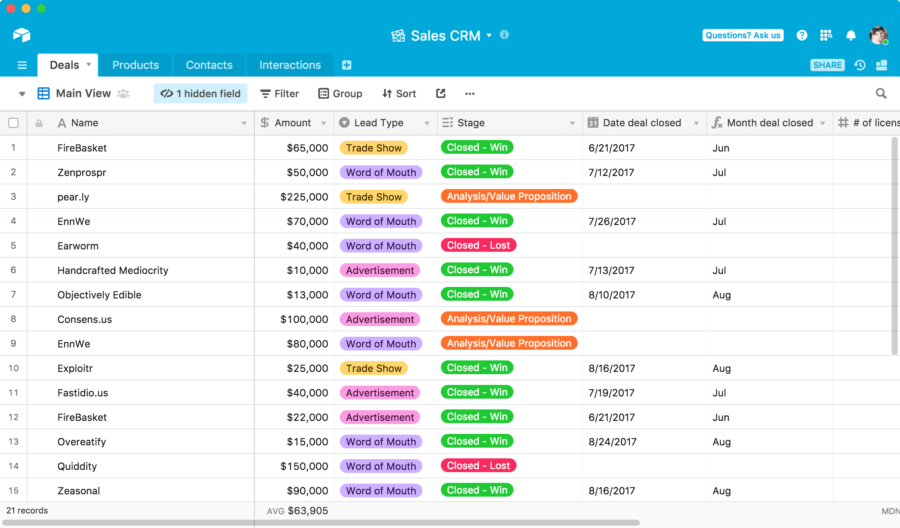
Airtable is what it sounds like — a customizable table of sorts that allows you to organize and plan tasks. The tool is free up to a certain “row” or task capacity, and after that it starts at $12 per user/month. The tool bills itself as “part spreadsheet, part database,” and has a few different views for each task, aside from the main spreadsheet or grid view. Some of Airtable’s other views include calendar view, gallery view, and Kanban view. Tasks can be stacked by priority, deadline, assignee, department, and more, and this tool also has integrations with a ton of apps, including Slack, LinkedIn and Gmail.
However, Airtable does lack some of the robust functionalities of Wrike, including an activity dashboard, as well as activity management and asset management software, which could be essential for larger teams. On the other hand, Airtable does have budgeting, chat, content filtering and custom charts, which Wrike lacks, which puts it on our list of Wrike alternatives. Overall, Airtable is more often used by smaller teams, whereas Wrike is utilized by larger organizations. Check out this resource for additional Airtable alternatives.
4. Smartsheet

Smartsheet is another spreadsheet-based project management software. It can be used as an alternative to Wrike, as it also helps teams track, assign and filter tasks in the workplace — that’s why it’s on our list of best Wrike alternatives. The app is cloud-based, and used by teams ranging in size. In addition to the spreadsheet view, Smartsheet also offers Gantt, file sharing, and workplace automation.
However, Smartsheet doesn’t offer this central communication hub, it’s harder for larger teams to use or integrate fully into their workflow. Smartsheet also does not offer a free version of their tool — the individual user license starts at $14.
5. Hibox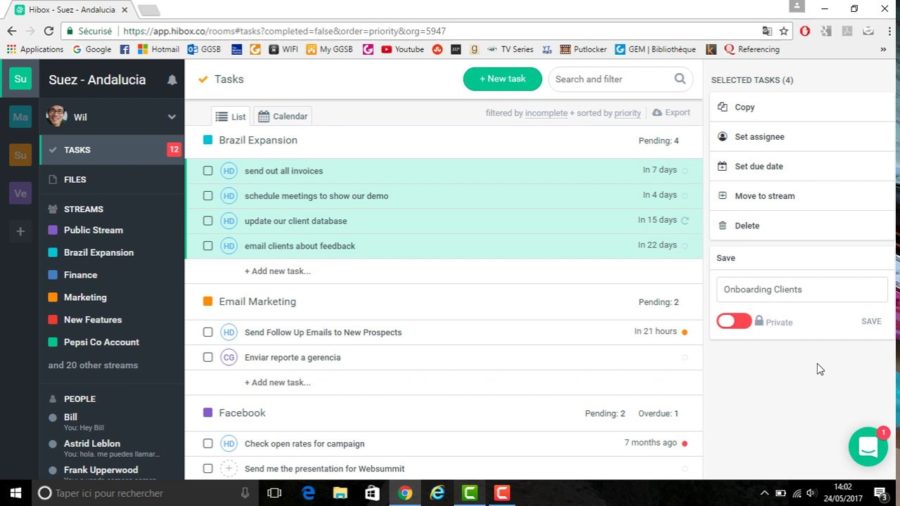
Hibox is another free task-based tool on our list of top Wrike alternatives that is geared towards the smaller company. It offers a free plan for up to 10 users, but using this free plan does limit your access to some core functionality like video conferencing, file organization and more in depth customer support for $4 per user/month.
Some of Hibox’s functionalities include calendar management, video conferencing in-app, and discussion boards, but it lacks many comprehensive features that Wrike has, including document management, real-time editing, and content management capabilities.
6. Jira
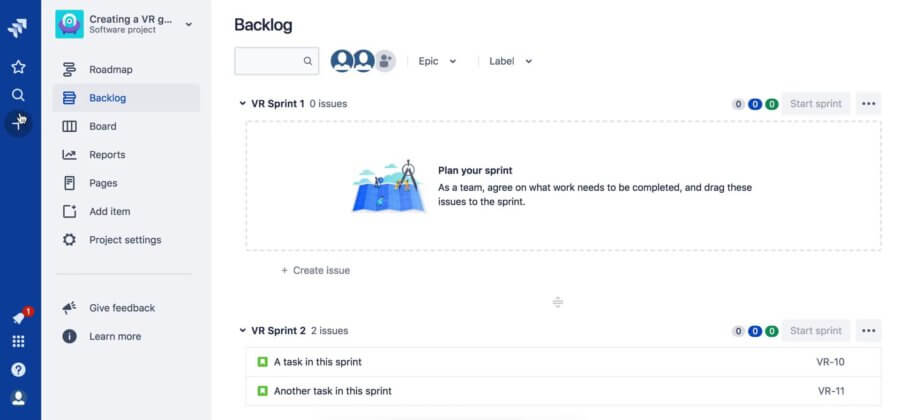
Getting into more serious, feature rich alternatives to Wrike, we’ve got Jira. This is one of our top Wrike alternatives, and for good reason. With Jira, which is often used by engineering and software development teams, you can view your projects a number of ways, from Kanban to Scrum boards, and you can visualize a great level of detail using the report generation options. Pricing starts around $10 per user/month, and Jira also integrates with over 3,000 apps.
Jira visualizes tasks as “issues,” which makes it a better choice for software dev teams tracking and fixing bugs, but you have to enable dependencies or subtasks, which can get confusing. Unfortunately, Jira lacks some of the basic functionalities that Wrike has, including resource management, time and expense tracking, and a client portal. To get more information, you can also compare Jira with Hive, another top project management tool.
7. Asana
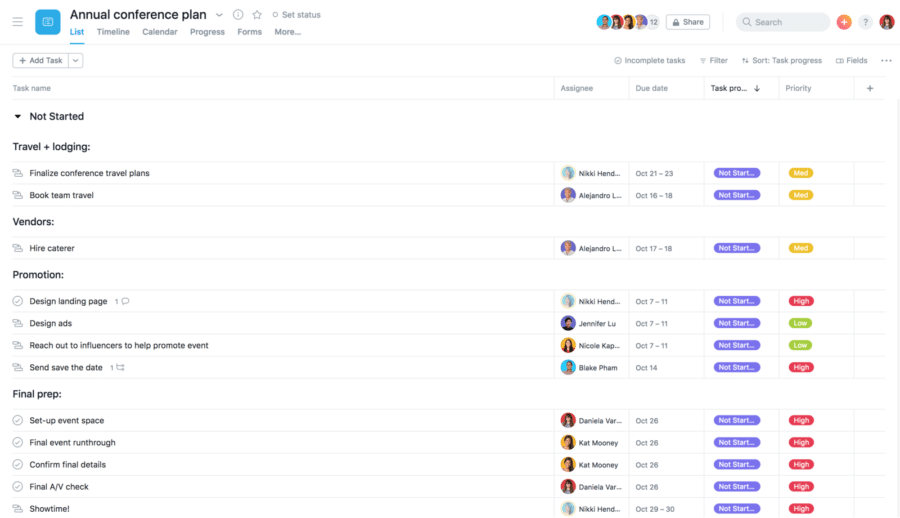
Asana is a comprehensive and visually appealing project management tool used by over 50,000 organizations around the world including National Geographic, Airbnb, Lyft and Spotify. That is one of the main reasons this tool is on our best Wrike alternatives list. The tool is built on tasks, which can be grouped into larger projects and assigned out to individual team members. Team objectives allow you to view progress on key initiatives over time, and “Workload,” a newer feature, allows you to map out each member’s workload over time.
Asana and Wrike are similar in their “freemium” payment model, but differ in some other basic capacities. Wrike has more of a set structure for project management, whereas Asana has greater flexibility, similar to Hive. Project views in Asana include list, boards, timeline and portfolios, whereas Wrike has a Gantt view, timelog view, table view, analytics view, file view, and board view. Timelog is one of the features that Wrike has that Asana doesn’t, so if you’re looking for time tracking, Wrike could be your best bet. You can also see how Asana compares with Hive here.
8. Trello

At it’s most basic, Trello is a tool that allows you to track progress on tasks in a traditional Kanban format — an agile project management methodology that helps visualize progress made on tasks. While Trello falls into the same project management category as Wrike, and they both allow you to create and track projects and tasks, there are a few major differences.
Trello’s interface is exclusively Kanban-style, whereas Wrike has several flexible projects views including Gantt, table view and board view. Wrike also has extensive functionalities that Trello doesn’t have, including time tracking, reporting, document management and issue management. Because of the minimal functionalities of Trello, we’d recommend this as one of our top Wrike alternatives for individual or smaller team use, whereas a tool like Hive would be the best option for larger, more involved teams.
9. Workfront
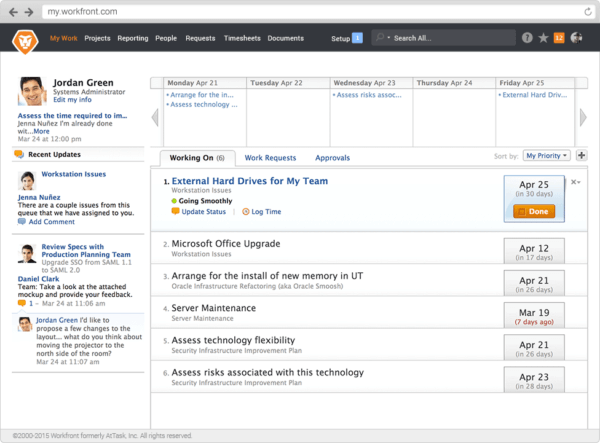
Workfront is a great alternative to Wrike if you are looking for an enterprise project management system. Workfront helps large enterprise teams streamline communication and work processes in industries including IT, marketing, product development, and more. The company has an impressive list of customers and was also recently acquired by Adobe. While Workfront and Wrike have similar features, Workfront does offer several things that Wrike does not offer, including proofing, digital asset management (DAM), and a more comprehensive resource management capabilities.
These additional capabilities come at a cost though. Workfront offers several enterprise plans and provides pricing upon request, but reviews confirm that it usually runs more expensive than most other PM softwares, including Wrike. Because of this, teams that need less functionality or have lower budgets may want to choose another tool.
10. Quire
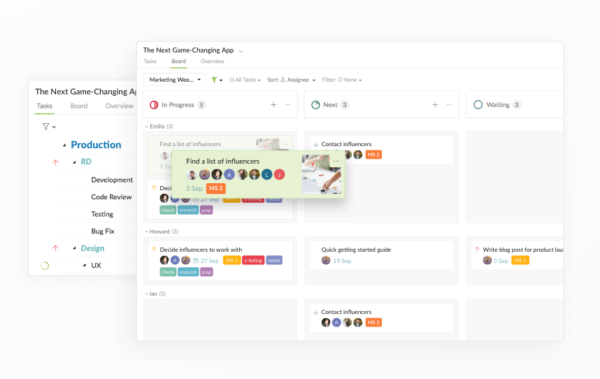
Quire is a collaborative project management software that is comparable to Wrike in many ways. Similar to Wrike, Quire helps teams break down tasks and organize them visually. Quire helps simplify your workflow by breaking down large tasks into smaller, digestible steps. These lists help you tackle tasks one-by-one, eventually working towards the larger goal. Quire offers a free basic version of the software, which does set it apart from Wrike’s pricing model.
Both tools support agile project management methodologies, but one difference is that Quire uses only Kanban-style boards to organize tasks, while Wrike offers several other layout options in addition to Kanban. Wrike offers several other features that Quire does not, including time tracking, budget management, and milestone tracking.
11. ClickUp

ClickUp is a great addition to our list of best Wrike alternatives, as it’s a true all-in-one tool and operates on a freemium model — you can use the tool for free. ClickUp claims that you can save one day a week using their tool, which has a few different primary functionalities, including to-do lists, docs, wikis, goal tracking, and resource management.
Wrike might be the better option if you want an old school PM option, but ClickUp’s fun colors and easy-to-learn interface could be better for your company.
12. Monday.com
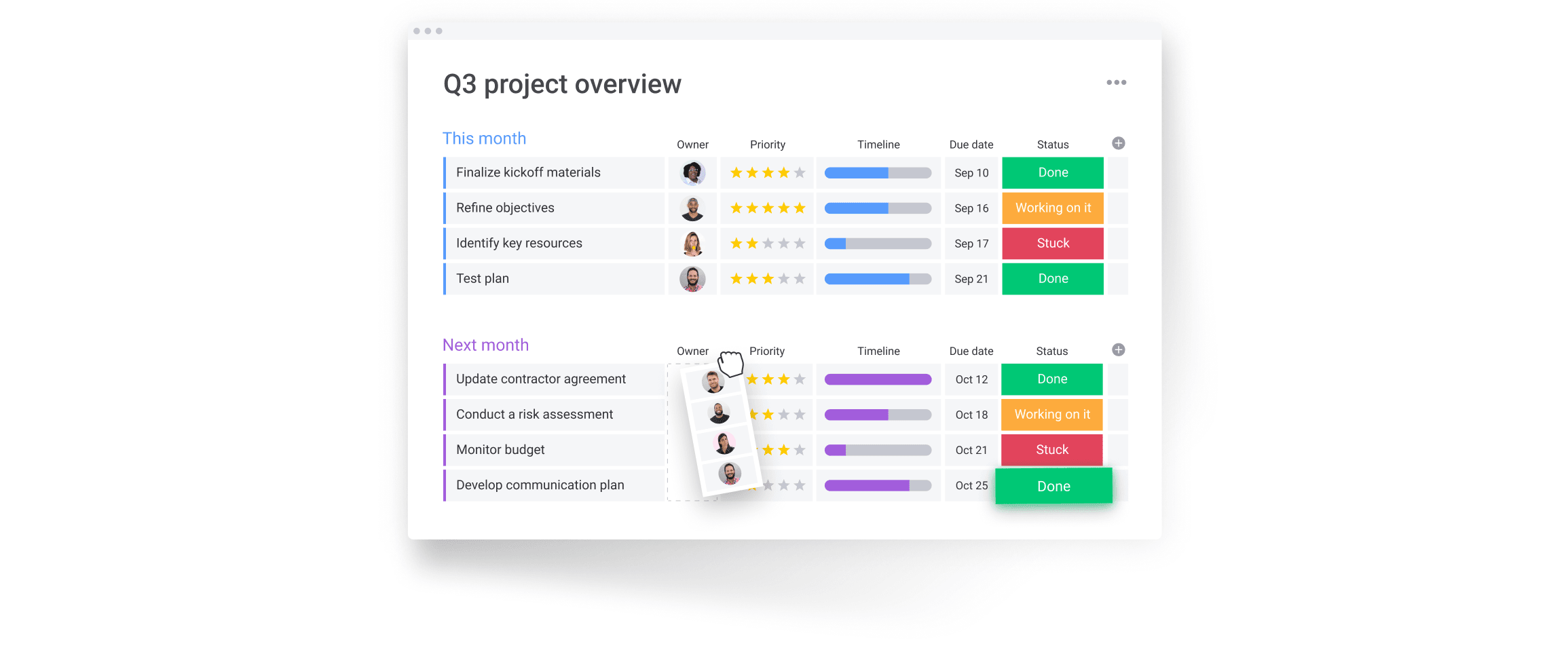
Monday.com is an intuitive option and one of our top Wrike alternatives ideal for teams looking for a lighter PM solution. This project management software uses bright colors and easy-to-follow instructions to get teams quickly working in-platform. They refer to themselves as a “work OS,” or operating system, and provide a hub for all work.
Some useful features that Monday has include boards and 30+ customizable table types which you can use to sort tasks, and other views like Kanban, table, calendar, timeline, Gantt, workload and more. Ideally, Monday would be used by smaller companies, whereas Wrike is more of an enterprise solution.
13. Runn
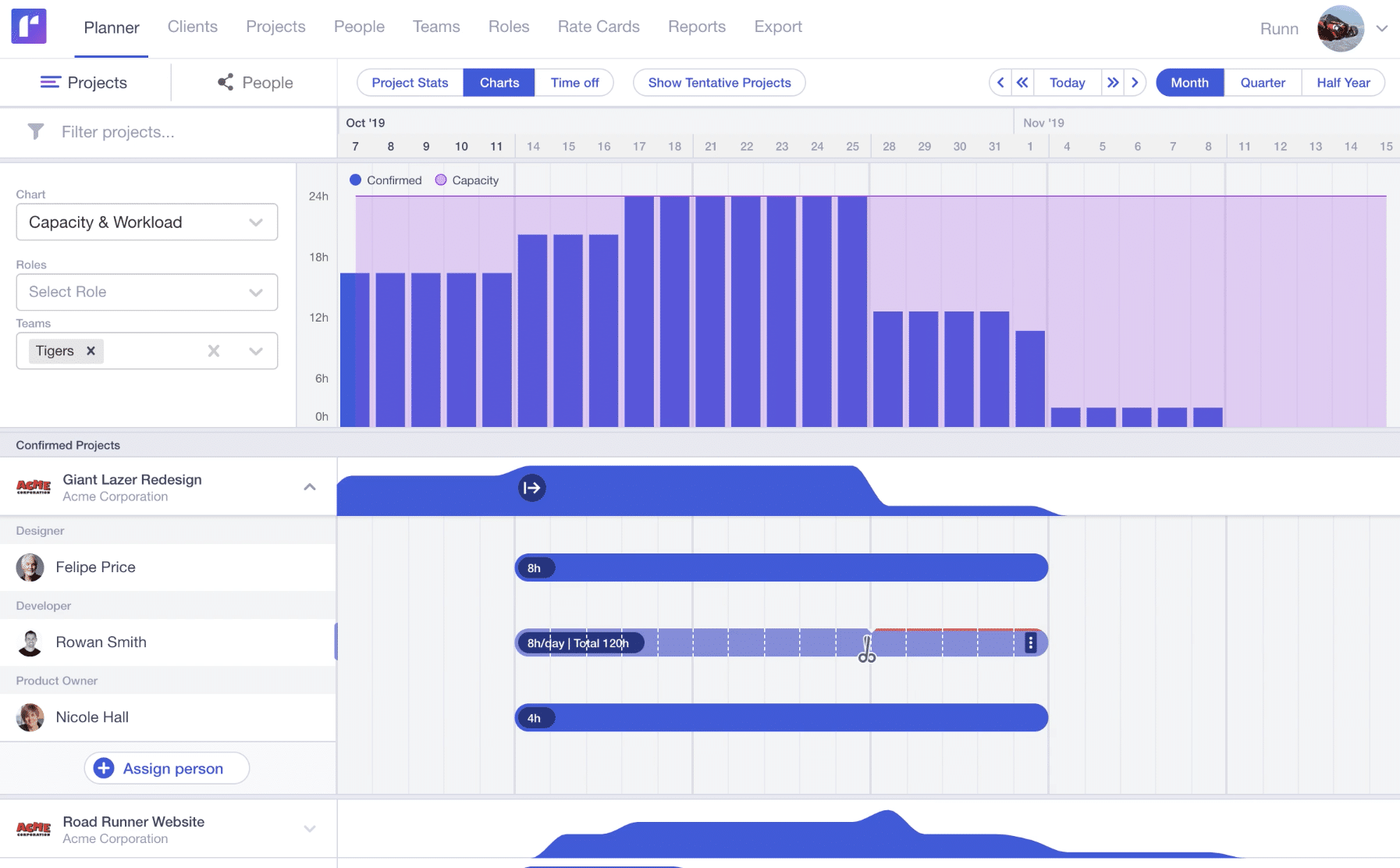
Runn is a great resource planning and forecasting software that helps teams stay on-track with all projects and progress. From a resourcing and scheduling perspective, Runn helps teams quickly schedule work for the larger team, and immediately see how it impacts your timeline, budget, and more. From a PM view, Runn lets teams not only schedule projects, but also track phases and milestones so they can better identify benchmarks throughout the project.
This is one of our top Wrike alternatives because it also allows tracking against KPIs, project performance, and provides variance charts, which are really helpful for project tracking and overviews.
14. ProProfs Project
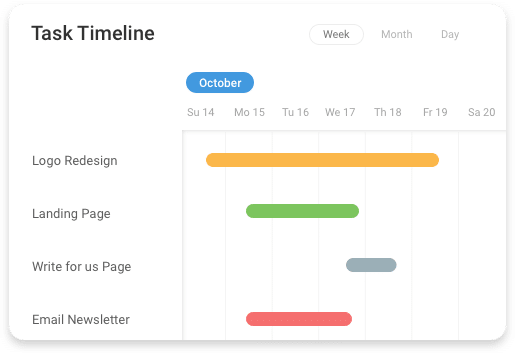
Proprofs Project is an easy-to-use online project management tool that aims to provide a delightful experience to users. ProProfs is a simple tool for managing tasks and tracking progress on projects, offering Gantt chart layouts just as Wrike does. It also has a mobile app to help manage your projects and keep track of work while on the go. The ProProf Essentials plan starts at $2 monthly per user, while the Premium plan starts at $4 monthly per user, depending on what features you desire.
While ProProfs has fewer integrations with other apps than Wrike does, it’s awesome support team and knowledge base are always available to help troubleshoot and make the most of everything the platform has to offer.
15. Proofhub
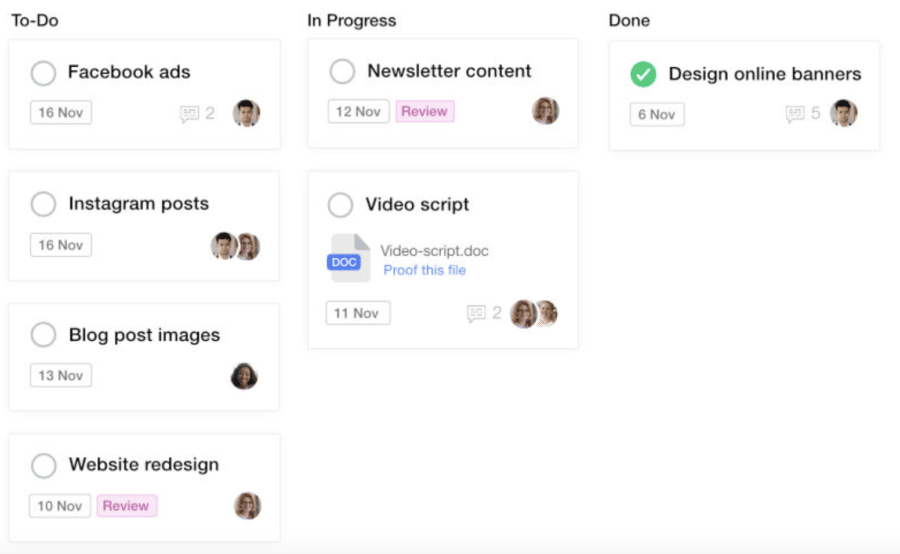
ProofHub is an online project management and collaboration software, approved and recommended by small businesses, fortune 500s and individuals to organize their projects for streamlined productivity. Whether it’s discussing tasks, sharing files, or reporting work progress, ProofHub helps you collaborate and deliver projects on time.
With ProofHub, you avoid the chaos and frustrations of email threads and mismatched versions. ProofHub equips you with everything in one place, which means your team can focus on getting work done instead of figuring out how to get it done.
Proofhub’s pricing model is what sets it apart from Wrike the most. With Proofhub, you pay one monthly cost for an unlimited number of users. The Essential plan is $45/month, while the Ultimate plan is $89/month. On the other hand, Wrike offers a free basic model, but if you need more robust features and opt for a paid plan, you will have to pay per user.
16. ProcessBliss
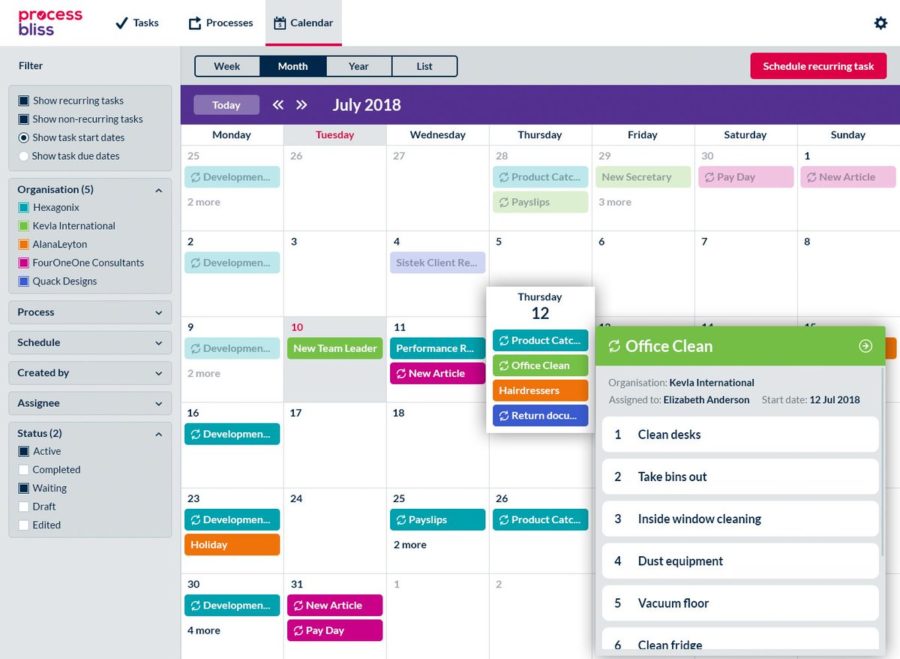
ProcessBliss is a task management software that helps to keep processes, procedures, and workflows tightly integrated with one another. Independently of your organization size, ProcessBliss facilitates onboarding with premade templates while keeping the flexibility for your company to craft your own.
With ProcessBliss, you can keep track of your project’s resources capability and apply improvements right away, preventing projects from getting done after the deadline. Users can keep all assets in one central searchable library that can include documents, videos, data, and links. The material can be classified into permission-based folder structures.
ProcessBliss allows its users to integrate and automate 3,000+ apps so that your team can focus on creativity and less on repetitive tasks. The software has a free plan with limited features. ProcessBliss’ paid plans start at $10/month per user.
17. Paymo

Paymo is a project management tool that helps users stay on top of tasks, track time and bill clients all in one place with a big focus on time management. It has built-in time tracking and invoicing capabilities making it a great choice for creative agencies and consulting firms. Clients can then pay directly from the invoice that they receive and these can even be setup as recurring so there’s no need to worry about missing payments on long term projects.
Boasting a ton of familiar features to help keep you organized like assigning multiple users to task sets, setting task durations and commenting back and forth with other users throughout projects. Priorities, alerts and task templates are available and there’s also a “Meta Kanban Board” that lets you see all the tasks in all the projects on one board. Paymo is best suited for small to medium sized organizations and is cloud based, making it accessible from anywhere on the web as well as on both iOS and Android devices.
Paymo has a free plan that limits users to 3 clients with paid plans starting at $4.95/user/month which includes unlimited clients. As a bonus, Paymo gives away two free months of service when paying annually.
18. Scoro
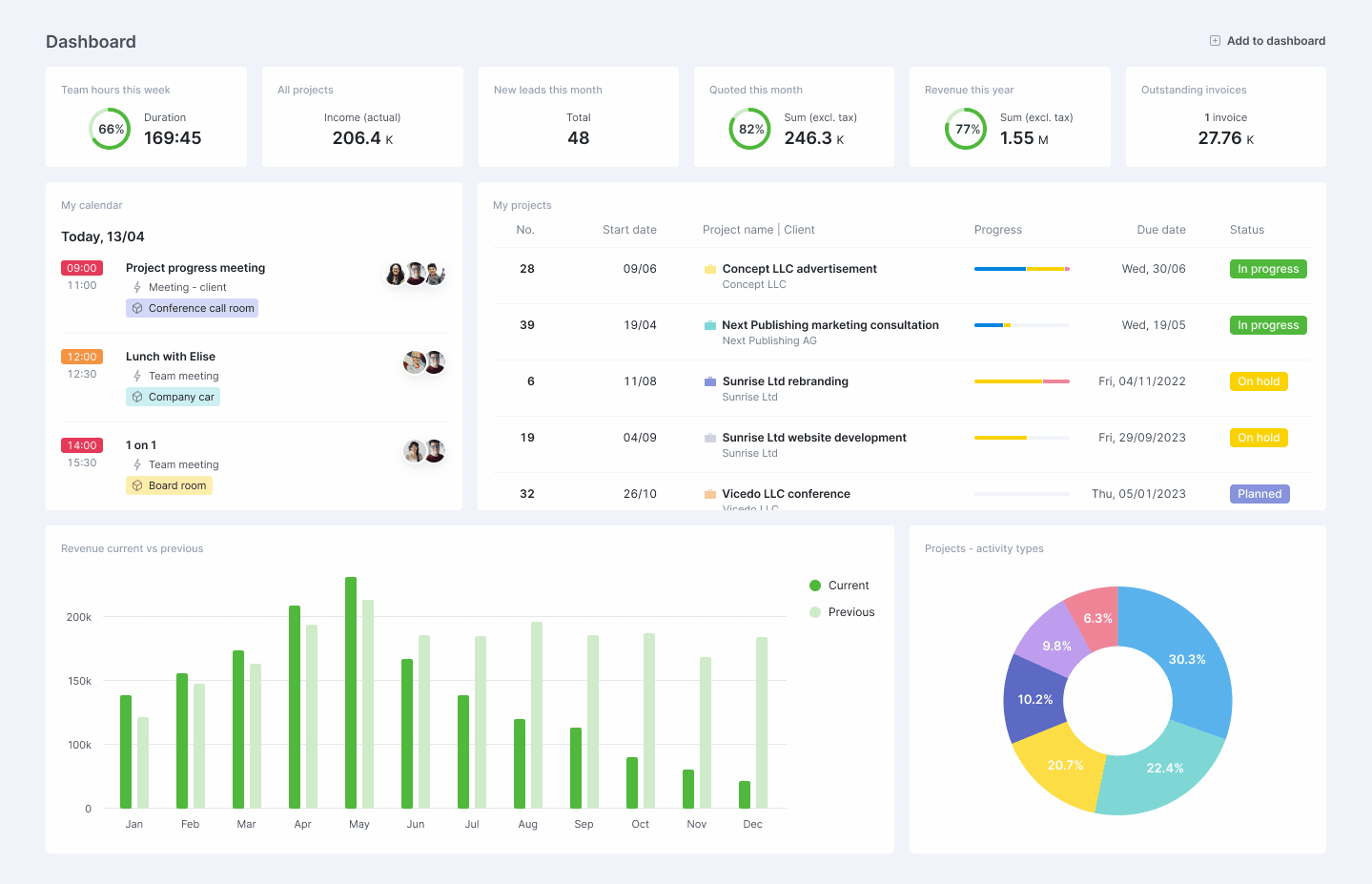
Scoro is another highly recommended alternative to Wrike. Its features focus on speeding up performance, with solutions such as agile methodologies, issue management and time & expense tracking. Scoro’s KPI dashboard also offers a holistic view of each aspect of the business, allowing users to track projects, workflow, and financial KPIs in real-time.
Scoro’s pricing begins at $26 per user/month for a minimum of 5 users. The plan includes projects, calendars, Gantt chart and Kanban board views, task lists and boards, contacts and customers, quotes, invoices and receipts, bills, dashboards and summaries of financial reports. On the downside, Scoro doesn’t have a free version, only a free trial, while Wrike has a free version with limited features for teams getting started.
19. Toggl
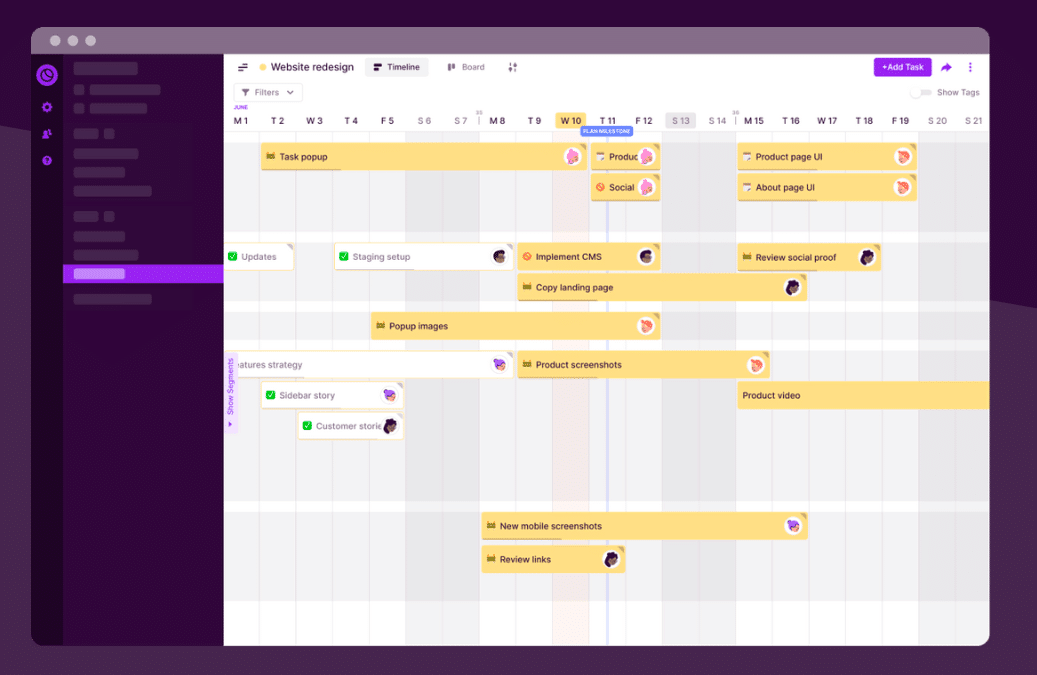
Toggl is a Wrike alternative for project planning ideal for small teams who like Gantt charts, collaborate via chat, and want to streamline workflow through automation. Toggl drag-and-drop interface allows flexibility when creating and customizing a project for each team. The software lets you see task statuses, set deadlines, add subtasks, and define task estimates. Plus, the tag feature for tasks makes searching, filtering and classifying projects and segments easier.
Toggl is free for solo users. One of the downsides of Toggle in comparison to Wrike is that Toggl requires a plan upgrade if you want to invite clients and external users to the platform. The premium plan costs $8 per user/per month and comes with additional features such as team planning, recurring tasks, and time tracking.
20. Nifty
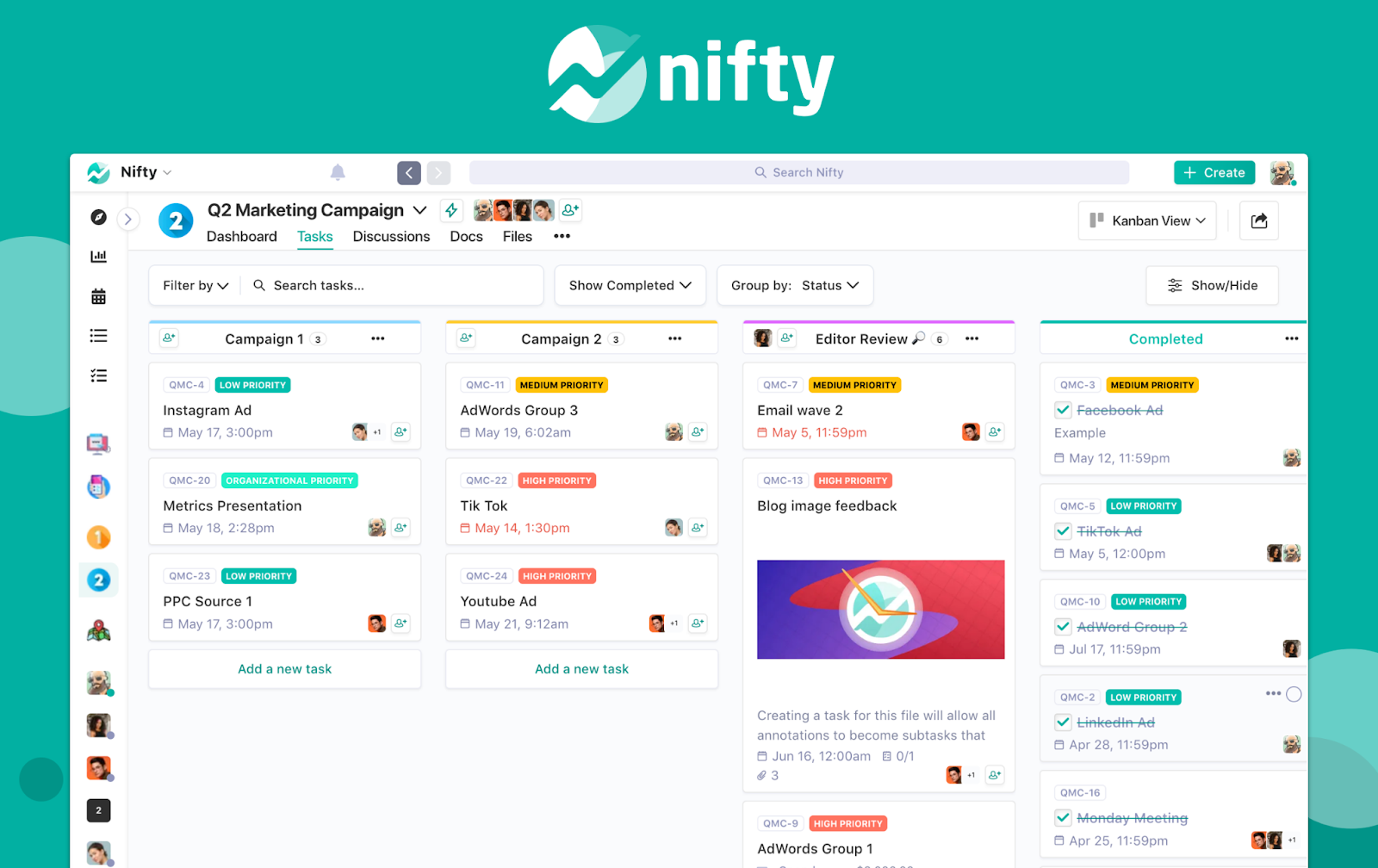
Nifty is a dynamic collaboration hub that consolidates project management and communication into a single space. On top of all tasks and timeline features you’d expect from a project management software, Nifty also offers Project Discussions and Direct Messages: making it a single tool for your workflow management.
Collaboration extends into document creation (including two-way synced Google docs) as well as Guest role for teams who want to bring external members, such as freelancers or clients. Nifty doesn’t have as many native integrations as other project management solutions but offers a more affordable than Write, with a starter plan at $5 per month.
21. MeisterTask
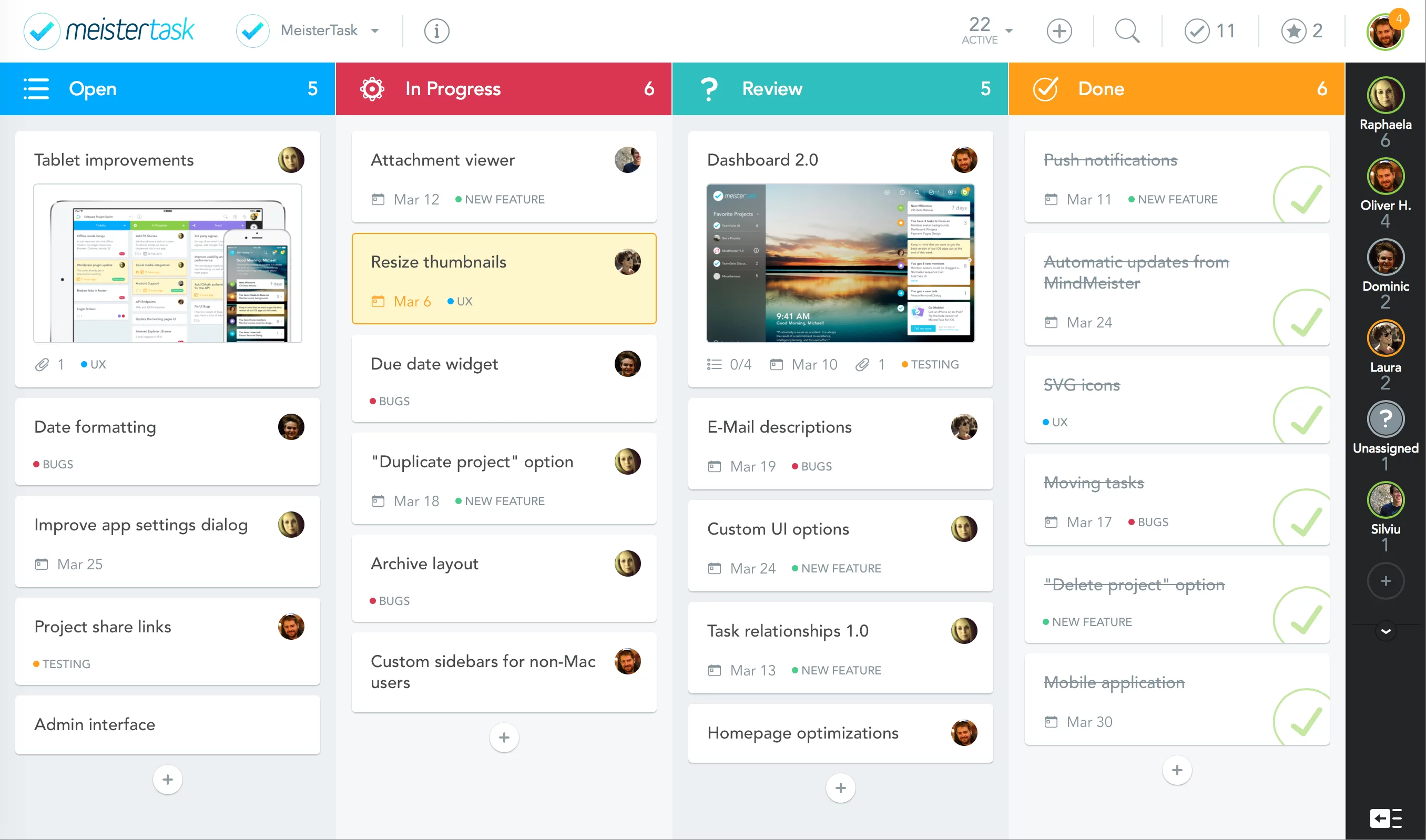
MeisterTask is a project management tool with a user-friendly interface that’s simple to navigate and learn, allowing you to get up and running quickly, without wasting valuable time on training and onboarding. It offers a flexible task management system that can be tailored to your team’s specific needs. The software provides an intuitive way to set up and manage workflows, letting you create and track tasks, assign them to team members, and set due dates.
With real-time collaboration features, you can easily prioritize tasks, attach files, and leave comments on them, making it easy to collaborate with your team in real-time. MeisterTask also integrates with a range of popular tools, including Slack, Dropbox, and Google Drive, so you can connect with the tools you already use and streamline your workflows. MeisterTask pricing starts at $14.49 per user per month and there’s a free plan available which includes core task management features for single users.
22. Zoho Projects
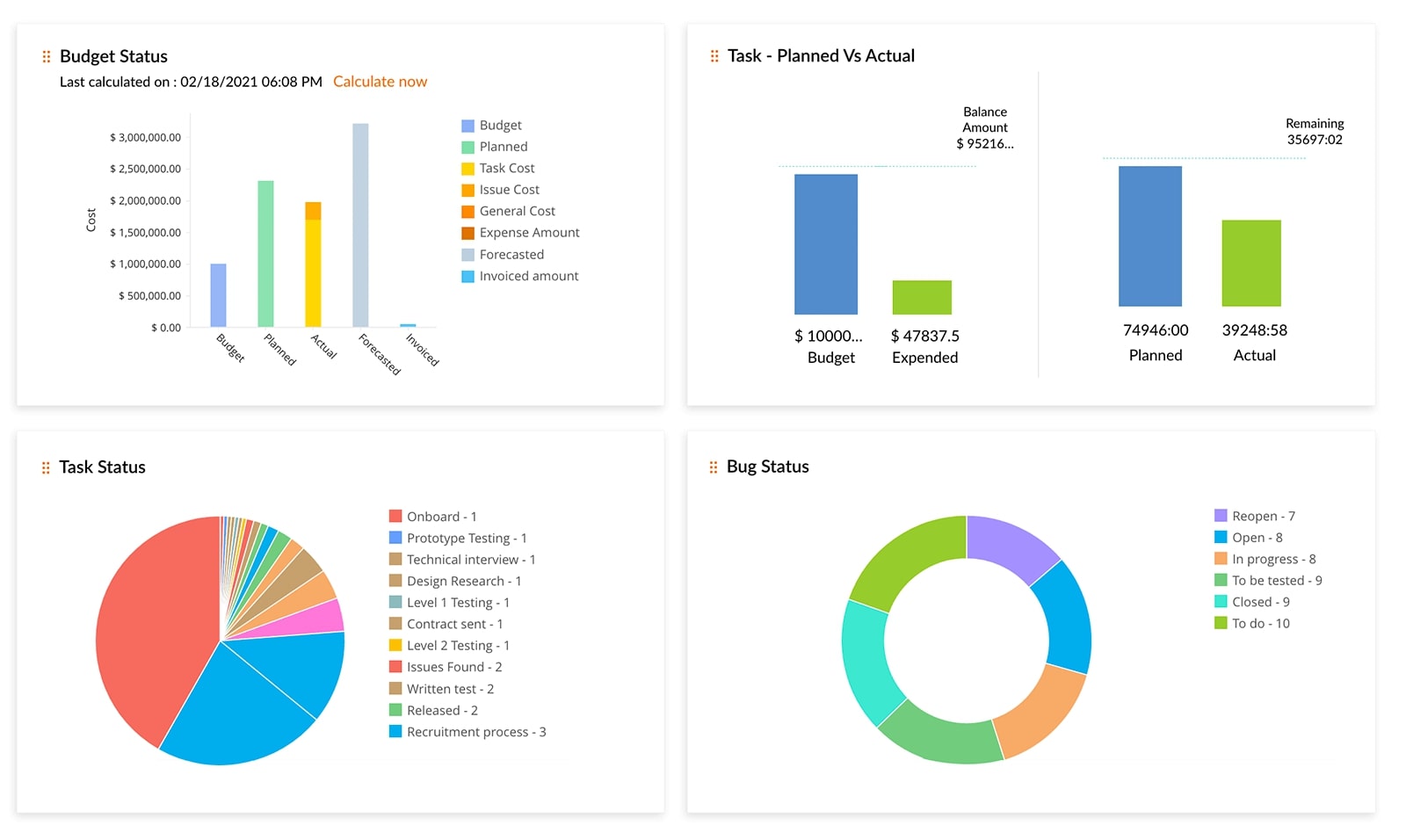
Zoho Projects is a project management tool alternative to Wrike for teams looking to collaborate on remote projects with an enterprise-grade software. It provides core features such as Gantt charts and Kanban boards, as well as advanced features like resource utilization tools and portfolio dashboards. Zoho Projects also allows integration with various business apps within the Zoho ecosystem and other popular software solutions like Google Apps, Bitbucket, Slack, and Zendesk.
Zoho Projects facilitates project management by enabling effective planning and management through tasks, milestones, and subtasks. While features can be customized to suit the specific needs of each team, some users may find the absence of premade templates a potential drawback for initial project setup. However, you can make templates from the projects you create yourself. The free plan offered by Zoho Projects is suitable for small teams and includes simple task management, a Gantt chart viewer, document sharing, and access to mobile apps. For advanced features, premium plans are available starting from just $5 per month per user.
Ultimately, there is a multitude of Wrike alternatives that you could consider based on budget, team size, and desired functionality. Hopefully, you’ve found a few potential tools in our list, and leave a comment below if there’s another alternative we’ve left out.
